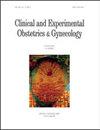新生儿无创心输出量监测仪(NICOTM)和血流动力学监测仪的研究进展
IF 0.6
4区 医学
Q4 OBSTETRICS & GYNECOLOGY
引用次数: 0
摘要
目的:血流动力学监测对指导危重新生儿的临床决策具有重要意义。无创血流动力学监测具有连续、方便、准确的特点,为新生儿重症监护病房(NICU)的实施提供了可行的选择。本文综述了新生儿无创血流动力学监测和电子心电仪(EC)应用的研究进展,为血流动力学监测领域的研究提供有价值的参考资源。机制:首先介绍新生儿血流动力学监测的临床意义,然后全面描述血流动力学监测中采用的有创和无创技术。此外,本文还讨论了新生儿体外循环的研究进展,重点讨论了其可行性和准确性。最后,介绍了EC在包括新生儿在内的多种疾病中的应用及其影响因素。研究结果摘要:由于有创心输出量监测的相关风险,需要无创或微创替代技术进行血流动力学监测。近年来,无创和微创技术,如超声心输出量监测仪(USCOM)和阻抗心动图已被应用。EC作为一种基于阻抗的监测,有助于无创和实时评估血流动力学参数。EC的集成可以实时、连续地监测患者心脏血管功能的动态变化,从而辅助临床评估和指导临床决策。结论:EC是一种无创、高灵敏度、准确的监测技术,对临床具有重要的指导意义。本文章由计算机程序翻译,如有差异,请以英文原文为准。
Research Progress of Noninvasive Cardiac Output Monitor (NICOTM) and Hemodynamic Monitor in Neonates
Objective: Hemodynamic monitoring plays a crucial way in guiding the clinical decision-making process for the management of critically ill neonates. Noninvasive hemodynamic monitoring is characterized by continuous, convenient, and accurate assessment, presenting a viable option for implementation in neonatal intensive care units (NICU). This review article summarizes the research advancements made in noninvasive hemodynamic monitoring and electronic cardiometry (EC) applications in neonates, providing valuable reference resource for studies in the field of hemodynamic monitoring. Mechanism: The clinical significance of hemodynamic monitoring in neonates is first introduced and followed by a comprehensive description of both invasive and noninvasive techniques employed in hemodynamic monitoring. Furthermore, the research progress of EC in neonates is discussed, focusing particularly on its feasibility and accuracy. Finally, the application and influencing factors of EC in diverse diseases, encompassing neonatal conditions, are presented. Findings in Brief: Due to the risks associated with invasive cardiac output monitoring, noninvasive or minimally invasive alternative techniques are needed for hemodynamic monitoring. In recent years, noninvasive and minimally invasive techniques, such as ultrasound cardiac output monitor (USCOM) and impedance cardiography have been utilized. EC, as an impedance-based monitoring, facilitates noninvasive and real-time assessment of hemodynamic parameters. The integration of EC enables real-time and continuous monitoring of dynamic changes in cardiac and vascular functions in patients, thereby assisting in clinical evaluation and guiding the clinical decision-making. Conclusion: EC is a noninvasive, highly sensitive, and accurate monitoring technique that holds important guiding significance in clinical practice.
求助全文
通过发布文献求助,成功后即可免费获取论文全文。
去求助
来源期刊
CiteScore
0.50
自引率
0.00%
发文量
241
审稿时长
1 months
期刊介绍:
CEOG is an international, peer-reviewed, open access journal. CEOG covers all aspects of Obstetrics and Gynecology, including obstetrics, prenatal diagnosis, maternal-fetal medicine, perinatology, general gynecology, gynecologic oncology, uro-gynecology, reproductive medicine, infertility, reproductive endocrinology, sexual medicine. All submissions of cutting-edge advances of medical research in the area of women''s health worldwide are encouraged.

 求助内容:
求助内容: 应助结果提醒方式:
应助结果提醒方式:


